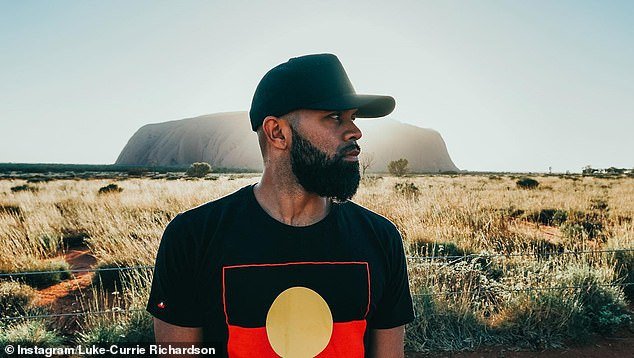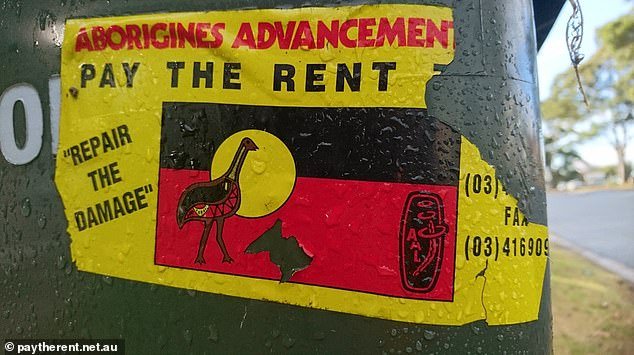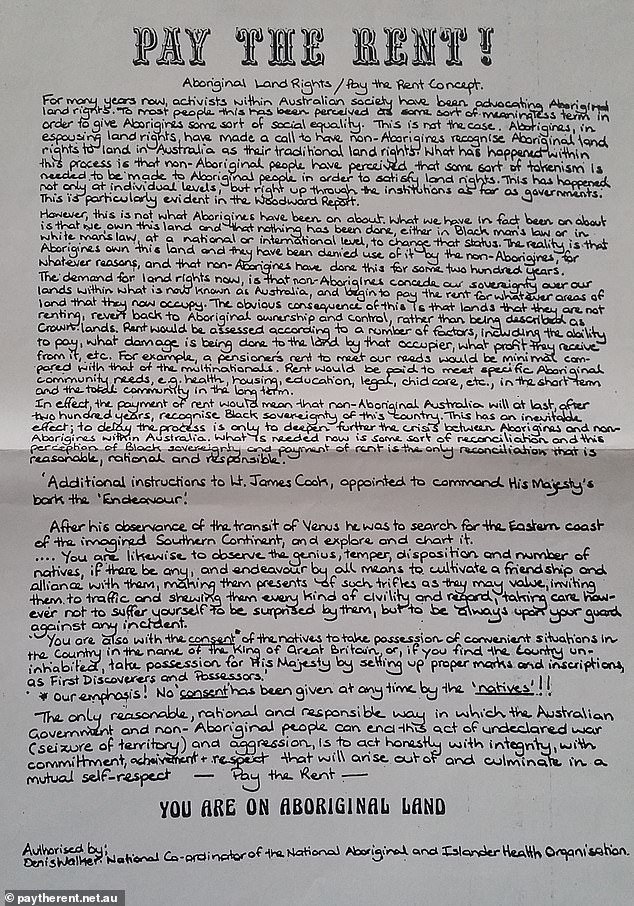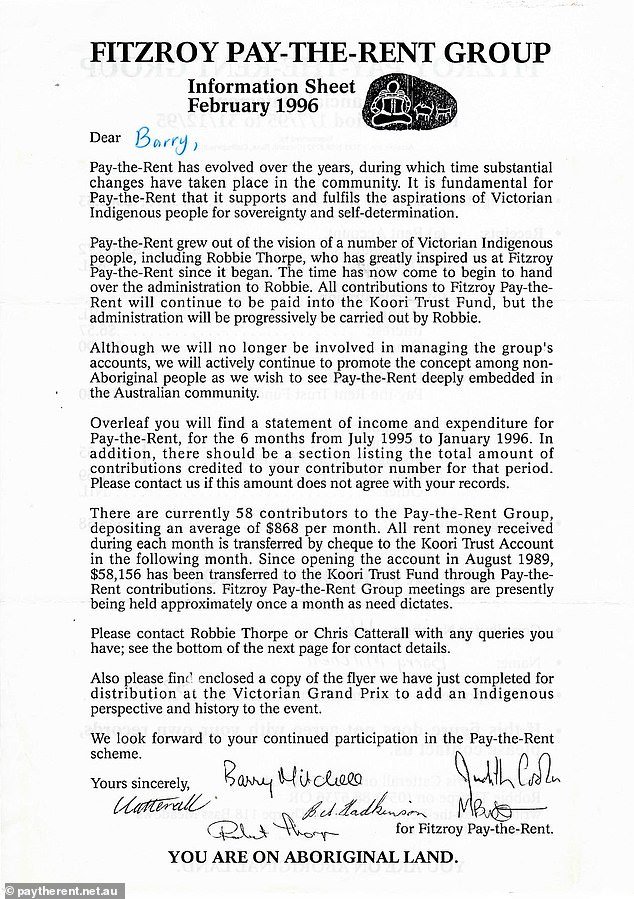Australia Day: Homeowners urged to start paying Aboriginals ‘weekly rent’ for living on their land
>
Australian homeowners have been urged to start paying a weekly “rent” tax to the traditional owners of the land their homes were built on before Australia Day.
Under the ‘Pay Rent’ model, landlords would voluntarily pay a percentage of their income to a body run by indigenous elders and run without government intervention.
One percent of weekly wages is the level suggested by Robbie Thorpe, a veteran Aboriginal rights activist from Melbourne who ran a similar scheme in Fitzroy in the 1990s.
Government statistics from last August say the average earnings of Australian employees were $1,250 per week.
Australian landlords have been urged to start paying traditional owners weekly ‘rent’ for the land their homes were built on before Australia Day.

Luke Currie-Richardson says ‘Pay Rent’ would work as a type of land tax, based only on those Australians who own property by paying rent to the traditional owners of that land.
Thus distributed evenly, all Australian wage earners could pay an average ‘rent’ of $12.50 a week, adding up to $650 a year.
Thorpe told the media that the rental plan is “a rational, reasonable and responsible means of reconciling 200 years of unchecked genocide, as far as I’m concerned.”
The ‘pay rent’ tax could also apply to indigenous peoples. Anyone who owns property would pay because it would operate as a form of land tax.
Supporters of the plan include feminist author Clementine Ford and prominent Green senator and activist Lidia Thorpe.
“We need to stop paying lip service to decolonization and start paying rent to First Nations people,” Ford said.
Thorpe said: ‘Pay rent from base to base. No ties to the government agenda. Help sovereign bases fight the many campaigns and struggles we face every day.’
Organizers of a website that already collects this type of rent for traditional owners in Victoria say the scheme could go further than just taxing homeowners.
Australians could also pay additional rent for the use of land where unique events such as weddings or festivals are held.
Wedding rentals could be calculated at one per cent of the total cost of a wedding, says paytherent.net.au.
With the average Australian wedding costing $54,000 to host, local Traditional Owners could receive a rental payment of $540 for each wedding.
When a music festival is held, the organizers could pay one percent of the total revenue collected as rent.

The organizers of a website, which already collects this type of rent for traditional owners in Victoria, say the scheme could go further than taxing homeowners.

‘Pay the rent’ was developed as a policy by the National Aboriginal and Islander Health Organization (NAIHO). In the photo above, a NAIHO document
The intention is that the money raised can cover the additional costs that indigenous peoples have for health, education and housing and reduce the need for government donations.
Many see it as a solution to the unpopular and unsuccessful default practice of giving government ‘handouts’ to people in distressed communities.
Collecting rent for Aboriginal people based on the fact that they owned property before the settlers is not a new idea.
It’s a revival of the ‘Pay the Rent’ plan that’s been around for over 50 years.
Since the 1970s, indigenous activists have repeatedly called on non-Aboriginal Australians to pay rent to local landlords.
Mr Thorpe’s Fitzroy ‘Pay the Rent’ group received payment from non-Aboriginal people who passed it on to their Aboriginal counterparts, who then used and distributed the funds as they saw fit.
Eventually, it was developed as a policy by the National Aboriginal and Islander Health Organization (NAIHO).
Both schemes eventually fell by the wayside.
But in recent years a new generation of activists has been promoting ‘Pay the Rent’, among them Lidia Thorpe.

Collecting rent for Aboriginal people based on the fact that they owned property before the settlers is not a new idea. It has been discussed since the 1970s.

A Pay the Rent scheme operated in Fitzroy during the 1990s
Another is Luke Currie-Richardson, 30, a descendant of the Kuku Yalanji and Djabugay peoples and a former dancer with the Bangarra Dance Company.
Mr Currie-Richardson says the current ‘Pay Rent’ model would work like a type of land tax, based only on Australians who own property paying rent to the traditional owners of that land.
‘[With] With those funds, we can finance our own health, our own education, our own housing,’ said Mr Currie-Richardson.
He believes that January 26 is an appropriate time for people to consider the options they have to make a difference, and signing up for recurring ‘Pay Rent’ installments is one way to do that.
